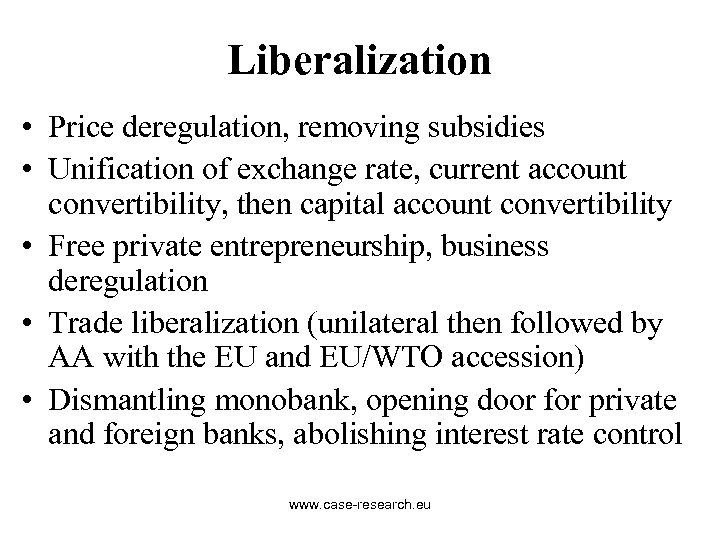Contents
According to the quantity theory of money, if the amount of money in the economy gets doubled up then the price level also doubles. It means that the customers will have to pay twice as much for the same amount of goods and services. This drastic increase in the price levels will result in a rising inflation level. A measure of the rate of the rising prices of goods as well as of the services in an economy is known as inflation.
The value of money or price level is also determined by the demand and the supply of money. This increase in the total supply of money decreases the value of money. Fisher points out the price level (M+ M’) Provided the volume of tra remain un changed. The truth of this proposition is evident fishers quantity theory of money from the fact that if M and M’ are doubled, while V, V and T re main constant, P is also doubled, but the value of money (1/P) is reduced to half.. For example, if a single rupee is used five times in a year for exchange of goods and services, then the velocity of circulation is 5.

This equation is an identity, that is, a relationship that holds by definition. It means, in an economy the total value of all goods sold during any period must be equal to the total quantity of money spent during that period . In other words, the level of prices in the economy is directly proportional to the quantity of money in circulation. That is, doubling the total supply of money would double the price level.
Quantity Theory of Money
According to the Transaction approach, If we consider the total transactions in physical goods are constant then the velocity of circulation of money could also remain constant. Which suggests the total supply of money is directly proportional to the general price level . The quantity theory of money states that quantity of money is the main determinant of the price level or the value of money.
Therefore, in both cases, the demand for money remains stable. It is the same forces that will influence the supply and demand of any commodity that will also influence the supply and the demand for money. An increase in the supply of money will decrease the marginal value of the money. In simple words, when the money supply will increase, the purchasing capacity of one unit of currency will decrease. To adjust this decrease in the money’s marginal value, the prices of the goods and the services will rise. This will eventually result in a higher inflation level.
According to Fisher, Keeping other factors at constant, an increase or decrease in the price level would occur due to an increase or decrease in the quantity of money. An increase in the volume of business transactions requires an increase in the supply of money (M and M”). Fisher’s transaction approach to the Quantity Theory of Money may be explained with the following equation of exchange. According to Keyne, money does not affect the price level.

‘Neo-quantity theory’ or the ‘Fisherian theory’ is the most common version known to many. It suggests that between the changes in the money supply and the general price level there is a mechanical and a fixed proportional relationship. In general, the quantity theory of money is where the increase in the quantity of money tends to create inflation and vice-versa. Thus, MV refers to the total volume of money in circulation during a period of time.
Comparison between Fisher’s Cash Transactions Approach and Cambridge Cash Balance Approach to Quantity Theory Of Money
The excess money will be spent on consumer goods as well as partly by purchasing assets. This spending will eventually reduce their cash balances and there is also a rise in the national income. According to the cash balance approach, the public likes to hold a proportion of nominal income in the form of money (i.e., cash balances). The demand for money is not only dependent on the quantity of goods and services that would be exchanged, but also on the time period at which the transaction takes place.
Any change in the quantity of money produces an exactly proportionate change in the price level. On the other hand, if the quantity of money is reduced by one half, the price level will also be reduced by one half and the value of money will be twice. The transactions version of the quantity theory of money was provided by the American economist Irving Fisher in his book- The Purchasing Power of Money .
Fisher’s Equation of Exchange
Fisher’s Transaction Approach can explain the causes of hyperinflation that occurs during war or emergency. This shortcoming has been modified by the Cambridge version or the Cash-Balance Approach. 1.P is passive https://1investing.in/ factor in the equation of exchange which is affected by the other factors. Moreover, the symbol k in the Cash Balance approach proves to be a better tool for explaining trade cycles than V in Fisher’s equation.
According to the quantity theory of money, the money supply in an economy is proportional to the general price level of goods and services. Supply of money consists of a quantity of money in existence . It is multiplied by the number of times this money changes hands which is the velocity of money . V is the transaction velocity of the money in Fisher’s equation.
- This will lead to reducing consumption which will reduce national income.
- Moreover, it has been proved that velocity of money doesn’t remain constant over time.
- It is the same forces that will influence the supply and demand of any commodity that will also influence the supply and the demand for money.
- This is the level of real GDP which is obtained when the economy’s resources are fully employed.
Thus k, according to the Cash Balance approach is a more important determinant of P than M as stressed by the Transaction approach. Moreover, the symbol k in the Cash Balance approach proves to be a better tool for explaining trade cycles than V in Fisher‘s equation. An American economist named Irving Fisher provided the version of the transaction of the quantity theory of money in his book ‘The Purchasing Power of Money’ in the year 1911. According to Fisher, as the quantity of money in circulation increases the other things remain unchanged.
Fisher’s Quantity Theory of Money
If we halve the quantity of money, and other things being equal, prices will be one half of what they were before and the value of money will be double. If we double the quantity of money, and other things being equal, prices will be twice as high as before and the value of money will be one half. This approach is based on the national income approach and considers the concept of liquidity. The Quantity Theory of Money It seeks to explain the factors that determine the general price level in a country. The supply of money is assumed as an exogenously determined constant.
Like other commodities, the value of money or the price level is also determined by the demand and supply of money. Velocity of circulation of money is the number of times a unit of money changes hands during exchanges in a year. Velocity of circulation – A unit of money is used for transactions and exchange purposes not once but many times in a year. During these many exchanges of goods and services, a unit of money passes from one hand to another. The volume of trade or transactions depends on the supply of goods and services to be exchanged.
Mail this Definition
The Transaction approach neglected income level as the determinant of the price level. According to the Transaction approach, the change in P is caused by change in M only. In the Cash Balance approach P may change even without a change in M if k undergoes a change.
4.T also remains constant and is independent of other factors such as M, M, V and V. Direct proportion and the value of money decreases and viceversa”. The Quantity Theory of money is one of the Western theories of Money. Also, we are going to learn about other monetary theories which will help us understand the concept effectively. The Fisherian quantity theory has been subjected to severe criticisms by economists.
An American economist, Irving Fisher put forward the theory which states that the increase in the quantity of money leads to the rise in the general price level. He believed that the greater the quantity of money, the higher the level of prices and vice versa. This theory links the prices with the quantity of money, that’s why it is called quantity theory of money. When the central banks sell securities, the money holding of the people also decreases in the relation to their permanent income. This will lead to reducing consumption which will reduce national income.


There are 0 comments